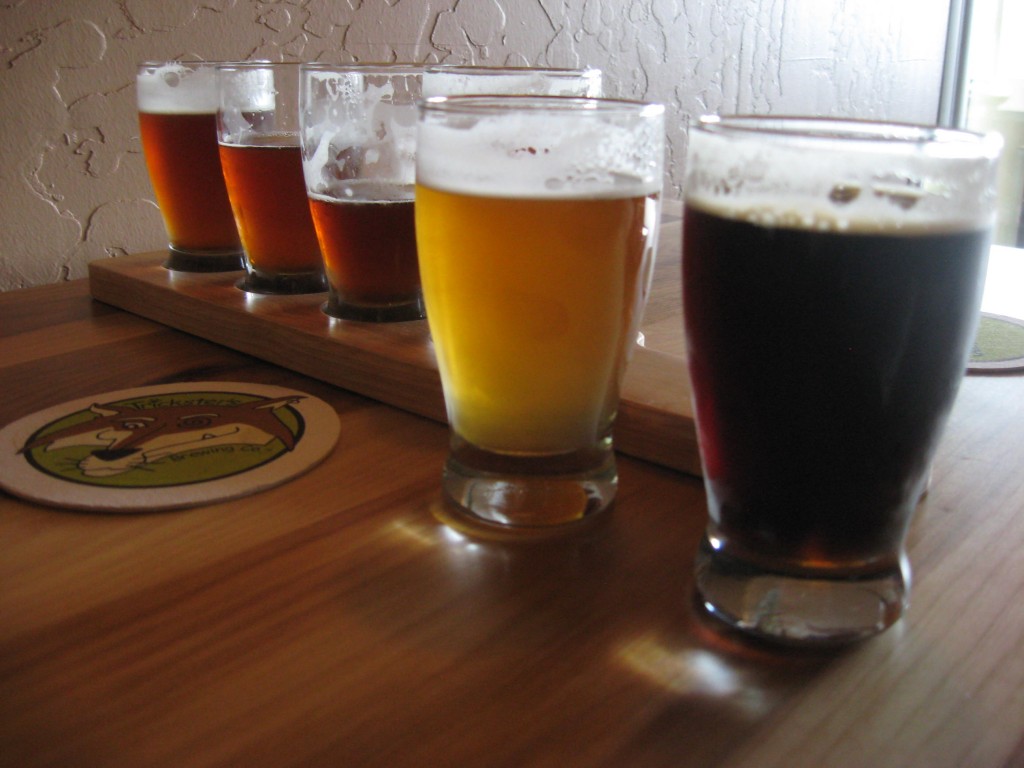Written by Ken Carman for Professorgoodales.net

Ken Carman is a BJCP judge; homebrewer since 1979, club member at Escambia Bay and Music City Homebrewers, who has been interviewing professional brewers all over the east coast for over 10 years.
The Topic: What Does It Take to be a Good Beer Judge?
My apologies in advance to those familiar with beer judging because I’m going to give everyone else a very short, admittedly inadequate, synopsis of what it takes, and what it means, to be a beer judge…. because I want to get on to the topic. Then another apology to fellow judges and beer folk if one of my suggestions offends you. At least one will be considered heresy, I admit, but I firmly believe that sometimes what was once considered heresy often becomes what understood to be common sense. Always obeying orthodoxy is as senseless as always rejecting it.
We still don’t think of the world as flat, right? Not all beer has to have just hops, water and malt: nothing else, right? For example, it wouldn’t even be beer without yeast, right?
But I’m mostly relativist, so what so I know for sure?
Philosophy aside… for those less familiar with judging beer here’s the very, very short overview of beer judgery…
Understand from the start that sanctioned beer competitions aren’t anything like Beerfest the movie. Even beer fests are usually not like Beerfest the movie. Being a beer judge is a serious business to be approached with professionalism. I tell people I’m a beer judge and they think it an easy job, even a joke. They think any test for it would be a joke too.
No way in hell is any of that true.
The BJCP test helps us learn how to be professional judges and show we know enough about beer to judge it well. How much is “enough,” and what direction should the test take? Well, that’s part of my “heresy,” I suppose.
BJCP: Beer Judge Certification Program.
It’s a very tough test where you need to know your styles backwards and forwards: and there are almost 30 styles, not including the many, many sub-styles. These: styles and sub-styles, are all very detailed as to aroma, mouthfeel, taste, appearance, gravity (Kind of “how heavy” in too simple, yet layman, terms.) …and many other specifics. Each time you take this very detailed test it will change: these sands with time will shift beneath your feet. Sometimes just different questions asked from a very large pool of questions that can change over the years both as to what the questions are and the answers. New questions have obviously been added over the years, and will be in the future, I’m sure. Sometimes the categories themselves change, and/or their definitions change: sometimes a lot… sometimes a little. What are considered commercial classic examples of the style change, I’ve seen that too.
All of this, and far more, you need to know practically like you know how to breathe.
Take it from me; a two time test taker who has sat in on other tests as well: having a photographic memory would be a big, big plus. I have been told by engineers of various kinds the test is harder than anything they took in college, and I know it’s harder than any of the tests I took studying to be a studio engineer, and English/Education major or Communications Mass Media. Or the various college programs in Science and Math I had to take since I started in Liberal Arts.
You really need to be dedicated to knowing all about beer, defects, style specifics and how to judge it. You also must know very specific information on how to brew it, which I will get to in a few sentences, for that is the main thrust of my comments in this edition of Brew Biz.
Want to know more? Start by going to the BJCP web site: that’s probably the first step in what I hope becomes a passion for you too.
Here is my problem with at least one of the concepts enshrined in both the test, how we study for it, and how that sometimes differs from what it takes to be a good judge…
Continue reading “Brew Biz: Werts and All”


 PHILADELPHIA, December 16, 2011 – 2011 may not have seen much in the way of brand new industry-wide development or innovation. However, that did not stop the following list of themes from continuing to grow deeper roots and being taken to a continually widening audience.
PHILADELPHIA, December 16, 2011 – 2011 may not have seen much in the way of brand new industry-wide development or innovation. However, that did not stop the following list of themes from continuing to grow deeper roots and being taken to a continually widening audience.

 Uncommon Brewers is certainly uncommon among California brewers. Unlike most West Coast breweries that feature hops in most of their beers, this Santa Cruz brewery does not.
Uncommon Brewers is certainly uncommon among California brewers. Unlike most West Coast breweries that feature hops in most of their beers, this Santa Cruz brewery does not.




You must be logged in to post a comment.